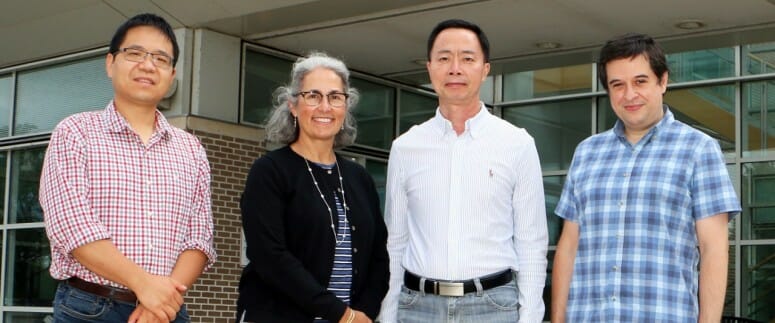07 Oct Stem cell project to create new model to study brain development and Down syndrome

Waisman Center researchers Daifeng Wang, Anita Bhattacharyya, Su-Chun Zhang and André Sousa are leading a new effort funded by an $11 million grant from the NIH to develop a model for brain development in Down syndrome that relies on stem cells. COURTESY OF THE WAISMAN CENTER
University of Wisconsin–Madison Waisman Center researchers are creating a new approach to study how changes to brain development in the womb result in intellectual disability in people with Down syndrome.
Their efforts, funded by an $11 million Transformative Research grant from the National Institutes of Health, may also reveal how brain development in individuals with Down syndrome differs from typically developing individuals, identify features that will help understand their intellectual disability, and find potential targets for therapy. They will also address questions that remain unanswered about brain development overall.
“Although Down syndrome is quite prevalent and we know a lot about individuals with Down syndrome — their characteristics, their features; we even know that they will develop Alzheimer’s disease — what we don’t have a good understanding of is how brain development in Down syndrome is different,” says Anita Bhattacharyya, professor of cell and regenerative biology. “We have surprisingly little information about this.”
Bhattacharyya, her Waisman colleague and UW School of Medicine and Public Health Professor of Neuroscience and Neurology Su-Chun Zhang, and additional collaborators at Waisman and the University of Washington-Seattle and Seattle Children’s Hospital, will develop a research model based on human induced pluripotent stem cells (iPSCs). The researchers say that current animal models used to study the syndrome don’t mimic the disorder well.



